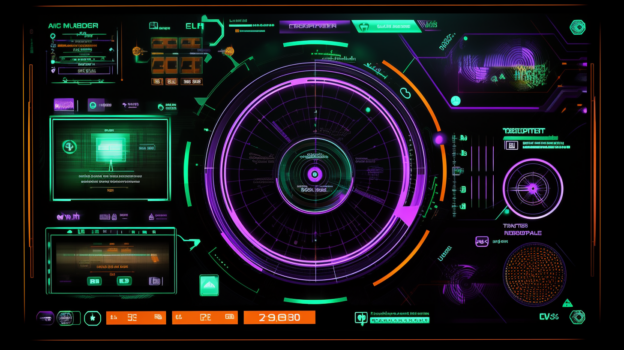As the demand for high-speed internet continues to soar, innovative solutions are imperative to optimize existing infrastructure and bridge the digital divide. This article proposes a groundbreaking concept that capitalizes on the RF emissions from copper-based internet infrastructure to augment bandwidth capacity without extensive infrastructure upgrades. Through encoding additional data onto the RF signature of copper cables, this concept offers a cost-effective and sustainable approach to expanding broadband access, particularly in rural and underserved communities. By addressing the challenges of abandoned copper infrastructure, this technology has the potential to advance the goals of achieving internet equality and fair access outlined in national initiatives.
Introduction
The advent of the internet has transformed virtually every aspect of modern life, revolutionizing how we communicate, work, learn, and conduct business. However, despite the widespread availability of high-speed internet in urban centers, millions of people in rural and underserved areas continue to grapple with limited connectivity, perpetuating disparities in access to online resources and opportunities. Bridging this digital divide is not only a matter of social equity but also a strategic imperative for fostering economic development, promoting educational attainment, and enhancing quality of life for all.
Traditional approaches to expanding broadband access, such as deploying fiber optic infrastructure, have been instrumental in advancing connectivity in urban areas. Fiber optics, with their unparalleled speed and reliability, have become the gold standard for high-speed data transmission, enabling seamless streaming, cloud computing, and IoT applications. However, the high cost and logistical challenges associated with fiber deployment have rendered it economically unfeasible in many rural and remote regions, leaving vast swaths of the population underserved and disconnected from the digital economy.
In parallel, the transition from copper-based internet infrastructure to fiber optics has led to the abandonment of extensive networks of copper cables, which once formed the backbone of telecommunications systems worldwide. While fiber optics offer superior performance and scalability, the legacy of copper infrastructure remains a valuable yet underutilized asset, presenting a unique opportunity to address the challenges of broadband expansion cost-effectively and sustainably.
Against this backdrop, this article proposes a novel concept that capitalizes on the RF emissions from copper-based internet infrastructure to augment bandwidth capacity without extensive infrastructure upgrades. By encoding additional data onto the RF signature of copper cables, it is posited that existing bandwidth capacity could be effectively doubled, thereby accelerating efforts to achieve universal internet access and narrowing the digital divide. This concept represents a paradigm shift in broadband expansion strategies, offering a cost-effective and scalable solution to extend connectivity to rural, underserved, and economically disadvantaged communities.
Through a comprehensive examination of the theoretical underpinnings, implementation strategies, and potential impacts of this concept, this article aims to shed light on the transformative potential of leveraging abandoned copper infrastructure to build a more connected and inclusive society. By harnessing untapped resources, maximizing resource utilization, and prioritizing the needs of underserved communities, we can pave the way for a future where high-speed internet access is not a luxury but a fundamental right accessible to all.
Background
The transition from copper-based internet infrastructure to fiber optics has been a significant paradigm shift in telecommunications networks worldwide. Fiber optics, with their unparalleled speed and reliability, have become the preferred choice for high-speed data transmission, rendering traditional copper cables obsolete in many cases. As a result, vast networks of copper infrastructure, once the backbone of telecommunications systems, now lay dormant, presenting a unique challenge in terms of disposal and repurposing.
The advent of fiber optics brought about a revolution in telecommunications, offering exponentially higher bandwidth capacity and virtually unlimited potential for data transmission. Unlike copper cables, which transmit data through electrical signals, fiber optics utilize light signals to convey information, resulting in faster speeds, lower latency, and greater reliability. This transition to fiber optics has been driven by the insatiable demand for bandwidth-intensive applications such as streaming video, cloud computing, and Internet of Things (IoT) devices.
However, the widespread adoption of fiber optics has left behind a vast infrastructure of copper cables, ranging from telephone lines to coaxial cables used for cable television and DSL connections. These copper assets, while no longer at the forefront of telecommunications technology, still hold intrinsic value and potential for repurposing. Abandoning these copper networks would not only result in significant environmental waste but also overlook the opportunity to address pressing needs for broadband expansion, particularly in rural and underserved areas.
In many regions, the cost of deploying fiber optic infrastructure remains prohibitive, especially in remote and sparsely populated areas. Fiber optic installation entails extensive excavation, laying of cables, and infrastructure upgrades, driving up costs and requiring substantial investment from telecommunications providers. As a result, rural communities often find themselves on the wrong side of the digital divide, with limited access to high-speed internet connectivity and the economic opportunities it affords.
The challenges of rural broadband deployment are further compounded by regulatory hurdles, geographic barriers, and socioeconomic disparities. Regulatory frameworks governing telecommunications infrastructure vary widely across jurisdictions, posing challenges for providers seeking to expand their networks into underserved areas. Geographic obstacles, such as rugged terrain and vast distances, increase the complexity and cost of deploying broadband infrastructure in rural regions. Moreover, socioeconomic factors, including income inequality and digital literacy levels, influence broadband adoption rates and exacerbate disparities in access to online resources and opportunities.
In recent years, efforts to address the digital divide and expand broadband access have gained momentum, driven by government initiatives, private sector investments, and community-led initiatives. The Federal Communications Commission (FCC) has allocated billions of dollars in funding through programs such as the Connect America Fund (CAF) and the Rural Digital Opportunity Fund (RDOF) to support broadband deployment in underserved areas. Similarly, private sector telecommunications providers have launched initiatives to extend their networks and reach unserved communities, often in partnership with local governments and community organizations.
Despite these efforts, the digital divide persists, with millions of Americans still lacking access to high-speed internet connectivity. Bridging this gap requires innovative approaches that leverage existing infrastructure, maximize resource utilization, and prioritize the needs of underserved communities. In this context, the concept of leveraging RF emissions from copper-based internet infrastructure emerges as a promising solution to expand broadband access cost-effectively and sustainably, unlocking the potential of abandoned copper assets to build a more connected and inclusive society.
Conceptual Framework
The proposed concept revolves around harnessing the RF emissions generated by copper-based internet infrastructure during data transmission. Unlike fiber optic cables, which transmit data through light signals, copper cables emit RF radiation as a byproduct of electrical currents passing through them. While traditionally regarded as noise, these RF emissions present a unique opportunity to repurpose existing copper infrastructure and augment bandwidth capacity without the need for extensive infrastructure upgrades.
At the heart of the conceptual framework lies the notion of encoding supplementary data onto the RF signature of copper cables. This process involves modulating specific characteristics of the RF emissions, such as frequency, amplitude, or phase, to represent additional data frames that piggyback on the existing transmission medium. By utilizing advanced modulation techniques, such as frequency-shift keying (FSK), amplitude-shift keying (ASK), or phase-shift keying (PSK), it becomes possible to embed encoded data within the RF emissions, effectively expanding the bandwidth capacity of the copper cables.
The continuous streaming encoding method forms the backbone of this conceptual framework, enabling a seamless and continuous flow of additional data alongside the primary data transmission. Through the integration of compression techniques, the encoded data can be optimized for transmission efficiency, maximizing the utilization of available bandwidth while minimizing signal degradation and interference.
Central to the implementation of this concept is the deployment of couplers and decouplers at strategic points along the copper cable network. These devices serve to inject encoded data into the RF emissions at the origin of the cable and extract the encoded data at the endpoint, respectively. By precisely controlling the modulation and demodulation processes, it becomes possible to ensure the integrity and reliability of the encoded data transmission, mitigating potential issues such as signal attenuation and distortion.
In addition to modulation techniques, signal processing algorithms play a critical role in the conceptual framework, facilitating the encoding, decoding, and error correction of the supplementary data. Advanced signal processing techniques, such as digital signal processing (DSP) and forward error correction (FEC), enhance the robustness and reliability of the encoded data transmission, ensuring accurate delivery of information across the copper cable network.
Furthermore, the conceptual framework encompasses mechanisms for monitoring and optimizing the RF emissions to maximize bandwidth utilization and minimize interference. Real-time monitoring systems continuously analyze the RF signature of the copper cables, adjusting modulation parameters and transmission protocols to optimize performance based on environmental conditions and network traffic patterns.
Rural Impact
Rural communities, often overlooked and underserved by traditional broadband providers, stand to gain immensely from advancements in communication technology. By repurposing existing copper infrastructure, broadband access can be efficiently extended to remote regions where the deployment of fiber optics is not economically feasible. This strategic utilization of available resources not only catalyzes enhanced economic opportunities and educational resources but also substantially improves healthcare access and overall quality of life for rural residents. The broader application of such technologies means that these communities can enjoy better connectivity, which is vital for modern services like telemedicine, online schooling, and digital business operations, reducing the urban-rural divide significantly.
Urban Impact
In addition to rural communities, inner cities with extensive networks of existing copper infrastructure can leverage this technology to enhance broadband access significantly. By converting abandoned copper assets into conduits for high-speed internet, urban areas can effectively overcome barriers to digital inclusion. This transformation not only fosters economic development but also promotes social equity by ensuring that all urban residents, regardless of their socio-economic status, have access to reliable and fast internet. This access is crucial for education, finding employment, and participating in the digital economy, thereby improving the overall quality of life and opportunities for everyone in the community.
The proposed concept of leveraging RF emissions from copper-based internet infrastructure represents a transformative approach to broadband expansion. By repurposing abandoned copper assets and harnessing untapped resources, this technology offers a cost-effective and sustainable solution to narrow the digital divide and achieve universal internet access. Through collaborative efforts and strategic partnerships, we can harness the power of telecommunications technology to build a more connected and equitable society for all.
John











